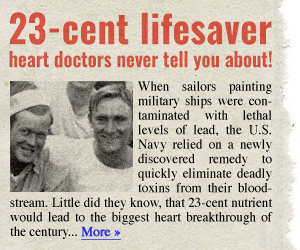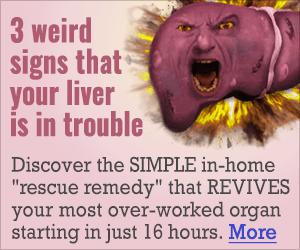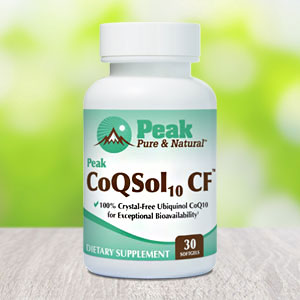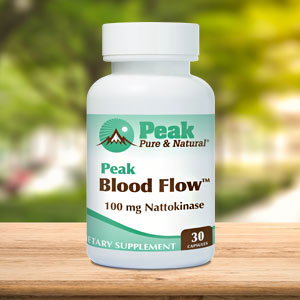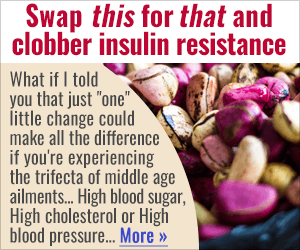Get Easy Health Digest™ in your inbox and don’t miss a thing when you subscribe today. Plus, get the free bonus report, Mother Nature’s Tips, Tricks and Remedies for Cholesterol, Blood Pressure & Blood Sugar as my way of saying welcome to the community!
The vitamin that slashes second heart attack risk by half

If you’ve suffered a heart attack, you have to focus not only on your initial recovery, but on preventing another attack.
That’s because the risk of a second heart attack is significant: about 1 in 5 people experience a recurrent event within five years.
But it’s not inevitable. The power to create a heart-healthy future is in your hands.
Simple steps like eating healthy, including plenty of fruits, vegetables and whole grains, along with lean sources of protein, getting regular exercise, managing stress and not smoking can help.
But it may have gotten a lot easier…
That’s because a research breakthrough has revealed a simple vitamin slashes the risk of a second heart attack by half…
The vitamin your heart craves
Vitamin D has a long history with heart health.
Some observational studies have linked low levels of the vitamin with poor cardiovascular outcomes — and one from Ohio University demonstrated that vitamin D could undo heart damage.
However, some clinical trials have failed to show measurable reductions in heart disease risk, leaving scientists scratching their heads…
Until a group of researchers from Intermountain Healthcare decided to follow up on a suspicion that the inconsistencies might be related to the doses used in most studies.
According to those researchers, previous trials gave everyone the same dose, without checking to see if participants ever reached a healthy, optimized vitamin D blood level.
Considering that vitamin D is not a one-size-fits-all vitamin — in other words, individual metabolism impacts blood levels — it was clear the Intermountain Healthcare scientists were onto something…
Targeted therapy is the key to success
To test their theory, the Intermountain study, called the TARGET-D trial was begun.
It ran from April 2017 to May 2023 and included 630 patients who had suffered a heart attack within a month of joining the study. They were followed until March 2025 to keep track of any adverse heart events.
At the beginning of the study, each patient’s vitamin D level was assessed. Not surprisingly, 85% of participants had vitamin D levels below the desired minimum threshold of 40 ng/mL, which aligns with the fact that most Americans have insufficient or deficient levels.
The patients were randomly assigned to one of two groups: one that received no vitamin D management, and the other underwent targeted vitamin D3 (the active form of the vitamin) treatment aimed at raising their blood levels above 40 ng/mL.
To reach an optimal level, more than half of the patients had to take an initial dose of 5,000 international units (IUs) of vitamin D3. This amount is often referred to as a therapeutic dose and is much higher than the standard recommended daily allowance (RDA) of 600-800 IUs.
Their blood levels were then checked every three months until optimized, then annually after that. Keeping those vitamin D3 levels in the green zone paid off…
Those who received the targeted treatment halved their risk of having a second heart attack.
According to Heidi May, PhD, cardiovascular epidemiologist at Intermountain Health and the study’s principal investigator, “We observed no adverse outcomes when giving patients higher doses of vitamin D3 supplementation, and to significantly reduce the risk of another heart attack, which are exciting results.”
Chalk one up for the vitamin D debate
This research is a huge step toward supporting heart health, but it also validates what many health experts have been saying for decades — that the current RDA for vitamin D is woefully insufficient.
In 2015, researchers at UC San Diego and Creighton University challenged the intake of vitamin D recommended by the National Academy of Sciences (NAS) Institute of Medicine (IOM), stating that the RDA for vitamin D underestimates the need by a factor of TEN, and was based on a calculation error.
When they brought it to the attention of the IOM in two separate studies, but were ignored.
The truth is, we’ve long known that taking a therapeutic dose of D3 at 5,000IU daily is safe for healthy adults. But scientific validation is the only thing that may cut through the chatter of those who still insist supplementing vitamins is a waste of time.
Should you get your levels checked? You could ask your doctor about that.
But if you purchase a vitamin D3 supplement at the drugstore or order a high-quality one online, it’s commonplace to see a suggested therapeutic dose set at 5000 IU.
That’s the same amount doctors use to raise and maintain deficiencies. To come anywhere close to vitamin D toxicity, the Mayo Clinic indicates a person would need to consume more than 10 times that amount daily for months on end.
Editor’s note: There are perfectly safe and natural ways to decrease your risk of blood clots including the 25-cent vitamin, the nutrient that acts as a natural blood thinner and the powerful herb that helps clear plaque. To discover these and other secrets of long-lived hearts, click here for Hushed Up Natural Heart Cures and Common Misconceptions of Popular Heart Treatments!
Sources:
What Are Your Chances of Having a Second Heart Attack? — Hackensack Meridian Health
Vitamin D3 breakthrough halves risk of second heart attack — ScienceDaily
Recommendation for vitamin D intake was miscalculated, is far too low, experts say — ScienceDaily



